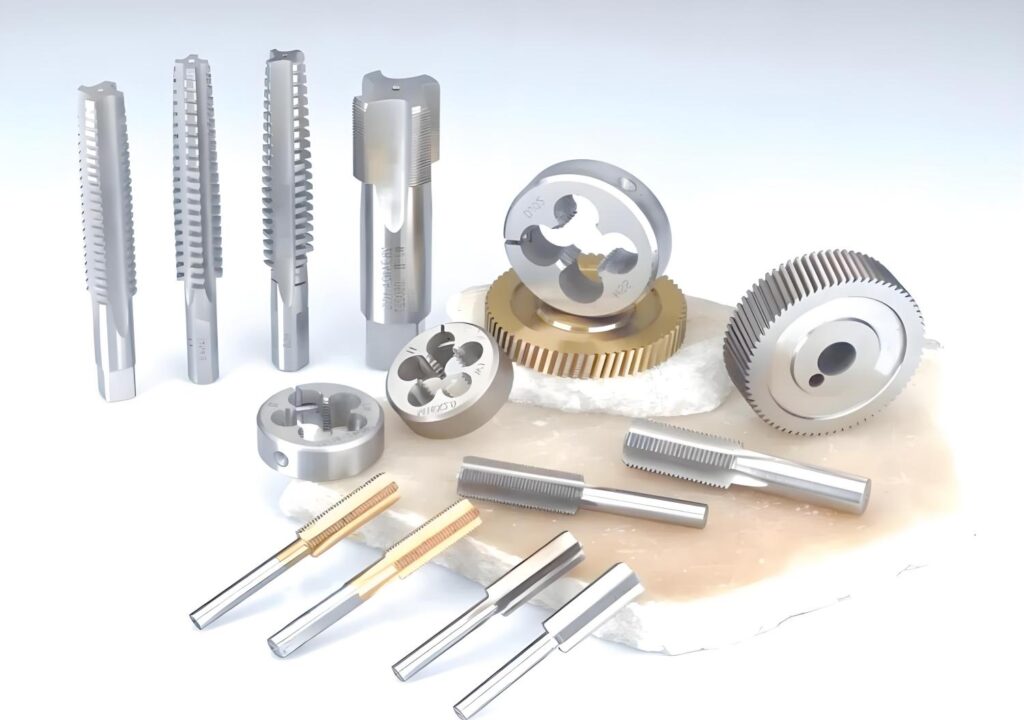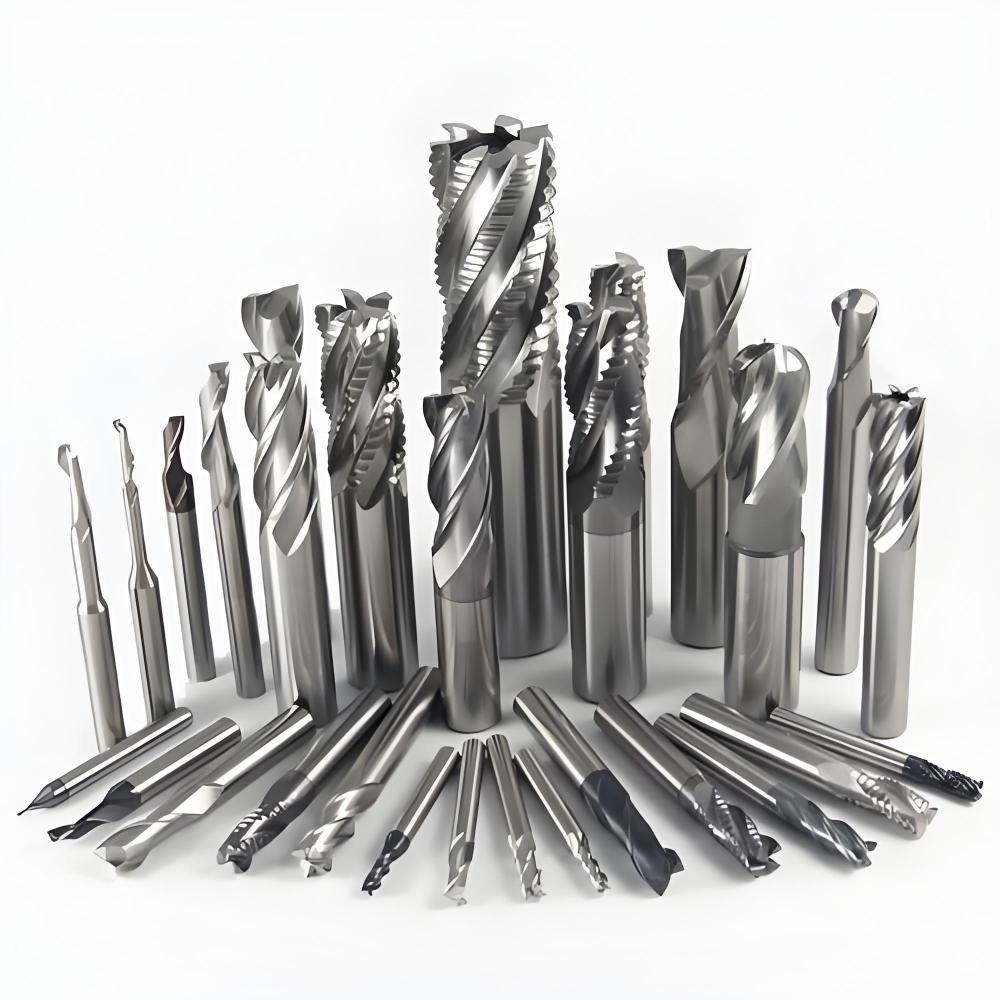What Is High-Speed Steel?
High-speed steel is a specialized type of tool steel designed to withstand extreme conditions during high-speed machining. Unlike standard steels, HSS retains its hardness and strength even at elevated temperatures, making it ideal for cutting, drilling, and milling applications. Its ability to maintain a sharp cutting edge under intense heat and friction has made it a favorite among machinists and manufacturers.
The origins of high-speed steel trace back to the early 20th century, when metallurgists sought materials that could keep up with the demands of industrial progress. By blending specific alloys, they created a steel that could endure the rigors of high-speed operations, revolutionizing industries like automotive, aerospace, and construction. Today, high-speed steel remains a go-to material for tools that require precision and resilience.
What Are the Chemical Compositions of High-Speed Steels?
The magic of high-speed steel lies in its carefully engineered chemical composition. HSS typically contains a mix of iron, carbon, and various alloying elements that enhance its performance. The primary components include:
- Carbon (C): Typically ranging from 0.6% to 1.4%, carbon provides hardness and strength, enabling HSS to maintain a sharp edge.
- Tungsten (W): Often present in quantities up to 18%, tungsten boosts heat resistance and wear resilience.
- Molybdenum (Mo): Used as a substitute or complement to tungsten, molybdenum (up to 10%) enhances toughness and reduces brittleness.
- Chromium (Cr): Around 3-5%, chromium improves corrosion resistance and hardness.
- Vanadium (V): Typically 1-5%, vanadium refines grain structure, increasing strength and edge retention.
- Cobalt (Co): In some grades, cobalt (5-10%) is added to improve heat resistance for extreme applications.
These elements work in harmony to create a material that can withstand the intense heat and mechanical stress of high-speed machining. The exact composition varies depending on the specific grade of HSS, tailored to meet the demands of different applications.
What Are the Properties of High-Speed Steels?

High-speed steel’s unique properties make it a standout in the world of machining. Here’s a closer look at what sets HSS apart:
Exceptional Hardness
HSS boasts impressive hardness, often reaching 62-67 HRC (Rockwell Hardness Scale) after heat treatment. This allows tools made from HSS to cut through tough materials like stainless steel and titanium without dulling.
Heat Resistance
One of the defining features of high-speed steel is its ability to maintain hardness at high temperatures, often up to 600°C (1,112°F). This red-hardness ensures tools don’t soften during prolonged use, even when friction generates significant heat.
Wear Resistance
Thanks to its alloying elements, HSS resists wear and abrasion, extending the lifespan of tools and reducing the need for frequent replacements.
Toughness
While HSS is incredibly hard, it’s also designed to resist cracking and chipping under mechanical stress, striking a balance between hardness and toughness.
These properties make high-speed steel a reliable choice for tools that must perform consistently under demanding conditions.
How Is High-Speed Steel Made?
The production of high-speed steel is a meticulous process that involves precise control over composition and heat treatment. Here’s a step-by-step overview:
Melting and Alloying
The process begins with melting raw materials—iron, carbon, and alloying elements like tungsten and molybdenum—in an electric arc furnace or vacuum furnace. This ensures a uniform composition and removes impurities.
Casting
The molten steel is cast into ingots or continuously cast into billets. This step shapes the material for further processing.
Hot Working
The cast steel is heated and forged or rolled into desired shapes, such as bars or sheets. This refines the grain structure and improves mechanical properties.
Heat Treatment
Heat treatment is critical for unlocking HSS’s potential. The process typically involves:
- Annealing: Softening the steel for easier machining.
- Hardening: Heating the steel to 1,200-1,300°C and quenching it to achieve maximum hardness.
- Tempering: Reheating at lower temperatures (around 500-600°C) to reduce brittleness while maintaining hardness.
Finishing
The final steps include grinding, polishing, or coating to achieve the desired surface finish and dimensional accuracy.
This intricate process ensures high-speed steel meets the rigorous demands of industrial applications.
What Are the Different Types of High-Speed Steels?
High-speed steel comes in various grades, each tailored for specific applications. The two primary classification systems are the AISI (American Iron and Steel Institute) and the ISO (International Organization for Standardization). Common types include:
M-Series (Molybdenum-Based)
- M2: The most widely used HSS grade, M2 contains molybdenum, tungsten, and vanadium. It’s versatile, offering excellent hardness and wear resistance for general-purpose tools like drills and end mills.
- M35: Enhanced with cobalt, M35 provides superior heat resistance, ideal for cutting tough materials like stainless steel.
- M42: With high cobalt content, M42 excels in high-temperature applications, often used for precision tools.
T-Series (Tungsten-Based)
- T1: A classic tungsten-based HSS, T1 offers good hardness and wear resistance but is less common today due to cost.
- T15: With added vanadium and cobalt, T15 is designed for extreme wear resistance, suitable for heavy-duty machining.
Each grade is formulated to balance cost, performance, and application-specific needs, ensuring machinists have the right tool for the job.
Application of High-Speed Steel

High-speed steel’s versatility makes it indispensable across industries. Its applications include:
Cutting Tools
HSS is widely used for drills, taps, milling cutters, and saw blades. Its ability to maintain a sharp edge at high speeds ensures precision and efficiency in metalworking.
Machining Components
HSS is found in lathe tools, reamers, and broaches, where its hardness and wear resistance enable consistent performance during repetitive tasks.
Aerospace and Automotive
In industries requiring precision components, HSS tools are used to machine parts like turbine blades, engine components, and gears.
Woodworking
HSS saw blades and router bits are popular in woodworking for their durability and ability to cut through hardwoods without dulling.
Medical and Dental Tools
The precision of HSS makes it ideal for manufacturing surgical instruments and dental drills, where sharpness and reliability are critical.
These applications highlight HSS’s role in driving efficiency and quality in manufacturing.
Advantages and Disadvantages of High-Speed Steel
Like any material, high-speed steel has its strengths and limitations. Understanding these helps manufacturers choose the right material for their needs.
Advantages
- Durability: HSS tools last longer than many alternatives, reducing replacement costs.
- Versatility: Suitable for a wide range of materials, from metals to plastics.
- Cost-Effective: Compared to advanced materials like carbide, HSS is more affordable, making it accessible for small-scale operations.
- Sharpenability: HSS tools can be resharpened multiple times, extending their lifespan.
Disadvantages
- Lower Performance Compared to Carbide: In extremely high-speed or abrasive applications, carbide tools may outperform HSS.
- Limited Corrosion Resistance: While chromium improves corrosion resistance, HSS is not as rust-resistant as stainless steel.
- Brittleness in Some Grades: High hardness can lead to brittleness, especially in cobalt-rich grades like M42.
By weighing these factors, manufacturers can determine when HSS is the best choice for their projects.
Why Choose High-Speed Steel for Your Machining Needs?
High-speed steel continues to be a trusted material in the machining world, offering a balance of performance, affordability, and versatility. Its ability to withstand high temperatures and maintain sharpness makes it a staple in industries ranging from aerospace to woodworking. By understanding its properties, types, and applications, manufacturers can harness the full potential of HSS to achieve precision and efficiency.
For companies seeking high-quality machining solutions, Precionn stands out as a leader in the industry. With a commitment to excellence, Precionn leverages materials like high-speed steel to deliver precision-engineered components tailored to client needs. Whether you’re exploring HSS for cutting tools or complex parts, Precionn’s expertise ensures top-tier results. Visit their website to learn how they can elevate your machining projects with cutting-edge technology and unparalleled craftsmanship.
FAQs About High-Speed Steel
Welding high-speed steel is possible but challenging due to its high carbon and alloy content, which can lead to cracking. Specialized techniques, such as preheating and using compatible filler materials, are required. For best results, consult a welding expert familiar with HSS properties.
High-carbon steel contains a higher percentage of carbon (typically 0.6-1.5%) for hardness but lacks the alloying elements like tungsten or molybdenum found in HSS. High-speed steel is designed for high-temperature performance, making it better suited for machining, while high-carbon steel is used in applications like knives and springs.
High-speed steel is not immune to rust, but its chromium content provides some corrosion resistance. To prevent rust, store HSS tools in a dry environment and apply protective coatings or oils, especially in humid conditions.
High-speed steels are a subset of tool steels, but they are generally harder due to their specific alloying and heat treatment. HSS is optimized for high-speed cutting, while other tool steels may prioritize toughness or shock resistance.
Bending high-speed steel is difficult due to its hardness and brittleness. While it can be shaped during the hot-working stage of production, bending finished HSS tools risks cracking or breaking. Alternative materials may be better for applications requiring flexibility.




